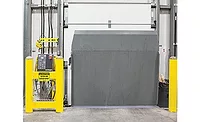Food Safety
Food defense and FSMA
The key to building a food defense program is risk assessment. Start now to evaluate current defense programs and assess the potential for intentional contamination.
Start now to evaluate current defense programs and assess the potential for intentional contamination.
When people talk about the good old days, sometimes a closer look at reality reveals things weren’t quite as good as they remember. In the food industry, we can pretty much tag anything pre-9/11 as the good old days, especially when the subject is food defense.
The 9/11 tragedy not only made food processors more aware of the potential for terrorism, but spawned a whole new industry in food defense. Things that are done routinely today, such as asking visitors for identification or conducting background checks, were the exception rather than the norm before 9/11.
In many ways, the changes are for the better. They have made the food supply safer and strengthened operational controls throughout the industry. The Food Safety Modernization Act (FSMA) covers food defense (see box below). FSMA also asks processors and food handlers to include hazards that may be intentionally introduced. For example, processors should include potential incidents that could be construed as an act of bioterrorism. The main challenge is the hazards may be unknown or unforeseeable. By the same token, investigating what could go wrong as a result of intentional contamination could pose a real burden on the industry, especially since no regulations or draft guidelines are available.
One tool that can be employed when conducting risk assessments is the vendor quality program. FSMA includes provisions for this issue. A well-developed, well-managed vendor quality program minimizes potential issues with raw materials, ingredients and packaging, but companies must still evaluate the risks that may exist once materials are off-loaded into their warehouses or storage bins and during processing. Is intentional contamination a risk? What has been done or can be done to mitigate such risks? This assessment must be part of the food safety management system even if intentional contamination is very unlikely to occur.
Plenty of tools and sources are available to help food processors and handlers develop food defense programs and to assess potential risks. Both FDA and USDA have developed self-assessment tools, either of which can be employed as a first step to evaluate the current state of a food defense program and what might be needed.
Surprisingly, many processors do not realize they may have already developed prerequisite programs as part of their quality or food safety system or their standard operating procedures that can be rolled into a food defense program. For instance, programs such as chemical handling and storage, shipping and receiving, employee guidelines and water quality and maintenance can be part of a facility’s food defense program.
What other elements should a food defense program include? That depends upon the type of ingredients being used; the size of the facility; how the materials are handled and stored; where the facility is located; and other factors. This is why the one-size-fits-all philosophy simply doesn’t work. For example, a greater potential for intentional contamination exists in a large food plant located near a container port than in a small specialty products operation in Montana. Consequently, the large facility near the port might need mandatory background checks of all applicants, whereas the specialty plant in Montana would not have that requirement. Why? In the latter facility, everyone knows everyone else, and new employees usually come from the immediate area.
The key to building a food defense program is a risk assessment, which should determine whether current systems are adequate or require upgrades, and why this decision was reached. Documented risk assessments also are invaluable tools during audits and will, in all likelihood, be equally valuable once the regulations for enforcing FSMA are final.
Looking for a reprint of this article?
From high-res PDFs to custom plaques, order your copy today!







